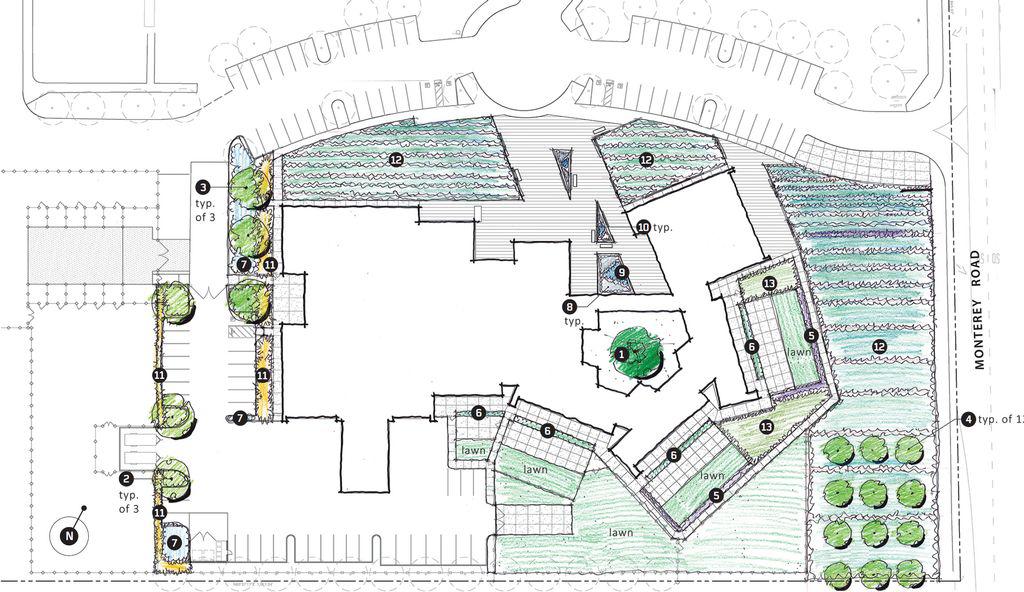Pet Smarter
August 1, 2020
From the August 2020 issue of
Landscape Architecture Magazine.
By Lydia Lee
A landscape makes for a better place to adopt pets.
Animal shelters are typically cold, institutional settings with cell blocks of caged animals. But Santa Clara County, California, home to Silicon Valley, is pioneering a more humane model with a new $35 million, publicly funded, no-kill Animal Services Center, scheduled to open in 2021.
Landscape is key to the building’s design. Providing services and community meeting space for the rural southern part of the county, the 37,000-square-foot facility is designed around a 2,900-square-foot dog park, where people can get to know their canine companions in a real-world setting. “It’s unique to have the opportunity to bring the natural landscape within the footprint of the building,” says Dave Rubin, an associate at Callander Associates, the landscape architects on the project.
The user-friendly design begins with a carefully landscaped approach to the facility, located on a 4.5-acre site next to open farmland. To soften the transition between the flat valley and relatively tall structure, the design team, led by Dreyfuss + Blackford Architecture, created a rippling terrain of linear berms. “The entrance is the low point through these parallel landforms that you traverse, so the landscape invites you to enter,” Rubin explains. The sculptural beds will be planted with ground covers that are nontoxic to animals, including lamb’s ear for its delightful resemblance to furry pets.
In the shelter’s current facility, a repurposed house, dogs are kept in a long row of kennels. Shelter staff members say the animals at the far end of the line are noticeably less likely to be adopted than those at the front, and visitors meet individual dogs in small, unappealing rooms coated in gray epoxy. By contrast, the new center, taking cues from the world of retail, is designed to showcase the animals. The design team arranged the 36 kennels around the open-air courtyard so that all the dogs are on display immediately past the entrance.
To provide a leafy shade canopy for the dog park, Rubin selected a native valley oak (Quercus lobata), which has a wide crown, reaching more than 60 feet at maturity. While the space is covered in synthetic turf for durability, the substrate beneath it is soil, so stormwater will still percolate into the ground. Elsewhere on the property, there is a barn for farm animals such as horses, cows, lambs, and chickens; for the pasture, Rubin specified a dry pasture grass mix that won’t require irrigation to flourish.
The pioneering center can be seen as an expensive test of whether changing the physical environment will increase pet adoptions. After touring seven other existing facilities and learning about their drawbacks, the design team is confident that a landscape-centric approach is the right way to go. “Once you come up with the idea for this layout,” says Gary Lewis, a project architect at Dreyfuss + Blackford, “you wonder why you would do it any other way.” ■
